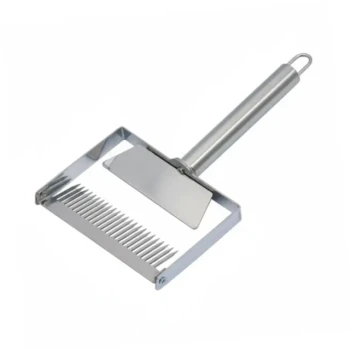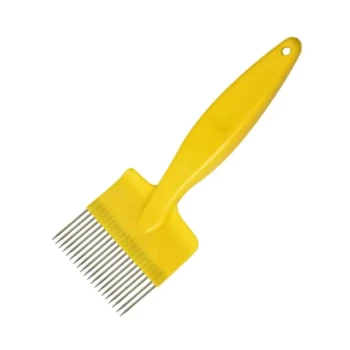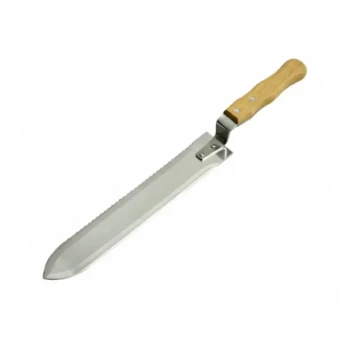No, a standard honey extractor is not designed for and should not be used with cut comb or chunk honey. Honey extractors are specifically engineered to work with whole, intact frames from a beehive. Attempting to use one for loose comb will result in a messy, inefficient process that clogs the equipment and fails to properly separate the honey.
The fundamental difference lies in structure and intent. A honey extractor uses centrifugal force on intact frames to sling honey out while preserving the delicate wax comb for reuse. Cut comb, lacking a frame for support, requires the crush and strain method, which separates honey by sacrificing the comb.
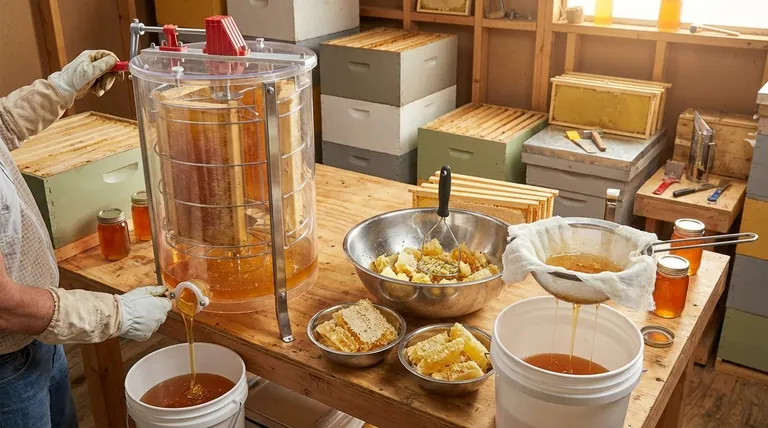
Why a Honey Extractor Fails with Cut Comb
The Role of the Frame
A honey extractor is essentially a centrifuge that holds bee frames. The frame provides the rigid structure necessary to support the honeycomb against the powerful rotational forces.
Without the frame, loose pieces of comb would be thrown against the walls of the extractor, breaking apart instantly.
The Inevitable Mess
Placing cut comb or chunk honey into an extractor would create a slurry of honey, broken wax, and potentially bee larvae.
This mixture would not separate cleanly. It would clog the extractor's honey gate and result in a significant loss of honey, contaminated with wax debris.
The Goal of Comb Preservation
A primary advantage of using an extractor is that it keeps the drawn wax comb intact.
Bees expend a tremendous amount of energy to produce wax and build this comb. Reusing the frames saves the colony weeks of work and allows them to focus on nectar collection, dramatically increasing honey production. This core benefit is impossible with cut comb.
The Correct Method: Crush and Strain
The Simple Process
For cut comb, chunk honey, or honey from frameless hives (like a top-bar hive), the proper technique is the crush and strain method.
You simply cut or scrape the honeycomb into a food-grade bucket or bowl. Then, using a clean utensil like a potato masher, you gently crush the comb to break open all the wax cells.
Separation with Gravity
Once the comb is crushed, the mixture of honey and wax is poured through a strainer, sieve, or layers of cheesecloth placed over a clean container.
Gravity does the work, allowing the liquid honey to drip through while the wax particles are left behind. This can take several hours, but it is highly effective.
Understanding the Trade-offs
Efficiency vs. Accessibility
Honey extractors are built for efficiency at scale. They allow a beekeeper to process many frames quickly and prepare them for immediate return to the hive.
The crush and strain method is slower but requires no specialized, expensive equipment. It is perfectly suited for hobbyists or those with only one or two hives.
Comb Reuse vs. Wax Harvest
The central trade-off is the fate of the wax comb. Extraction preserves it for the bees, boosting future honey yields.
Crushing destroys the comb but yields a secondary product: beeswax. This clean, strained wax can be melted down and used for candles, balms, or other crafts.
Honey Clarity
Extracted honey is often cleaner straight out of the machine, as only the liquid is thrown from the cells.
Honey processed via crush and strain can have more fine wax particles suspended in it. This may result in a slightly cloudier appearance but does not affect the taste or quality.
Making the Right Choice for Your Honey
- If your goal is to harvest from standard Langstroth frames and maximize honey production: A honey extractor is the correct tool, as it allows you to reuse the comb.
- If you have harvested cut comb, chunk honey, or are using a frameless hive: The crush and strain method is the simple and effective way to separate your honey from the wax.
- If you want to enjoy the full texture and experience of honeycomb: Simply cut the comb into serving sizes and consume it directly, with no extraction needed.
Ultimately, your harvesting method is determined by the type of hive you manage and your goals as a beekeeper.
Summary Table:
| Method | Best For | Key Outcome |
|---|---|---|
| Honey Extractor | Standard frames (e.g., Langstroth) | Preserves comb for reuse; efficient for scale |
| Crush & Strain | Cut comb, chunk honey, frameless hives | Separates honey but destroys comb; yields beeswax |
Optimize Your Honey Harvesting with the Right Equipment
Whether you're a commercial apiary focused on maximizing honey production with efficient extractors or a distributor seeking reliable supplies for various beekeeping methods, HONESTBEE has the solutions. We supply durable, wholesale-focused beekeeping supplies and equipment to help you succeed.
Let's discuss your specific needs. Contact our team today to find the perfect tools for your operation.
Visual Guide
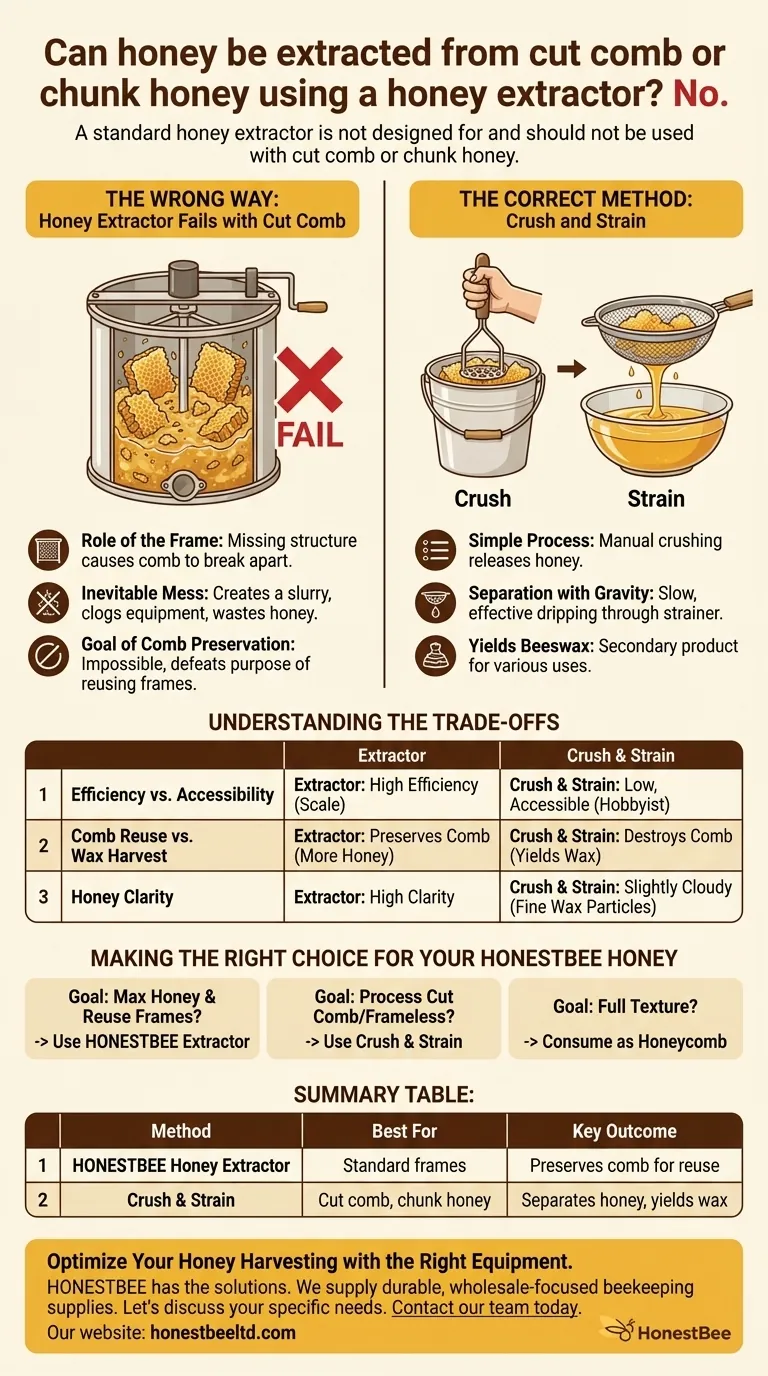
Related Products
- HONESTBEE 3-Frame Manual Acrylic Honey Extractor
- Extra-Wide All-Stainless Steel Honey Uncapping Fork with T-Handle
- Professional Durable Plastic Handle Honey Uncapping Fork
- Plastic Hand Crank 2 Frame Honey Extractor Low Price
- 8-Frame Electric Self-Reversing Honey Extractor Spinner for Commercial Honey Extraction Equipment
People Also Ask
- Which type of honey extractor is generally more durable? Focus on Material & Build Quality for Longevity
- What is the most common method for cleaning a honey extractor? Protect Your Honey & Equipment
- How do you manually extract honey? Choose the Best Method for Your Hive
- What is a fun and easy alternative to using a honey extractor for harvesting honey? Try the Crush and Strain Method
- What size honey extractor do I need? Match Frame Capacity to Your Hives for Maximum Efficiency

